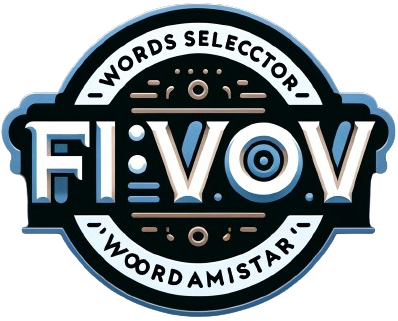Are you attempting to determine if something is feasible but find yourself needing to inquire first? Maybe you’re concerned that the phrase “excited for what’s to come” might not be the most professional way to ascertain if an action can be undertaken.
MY LATEST VIDEOS
Well, you’ve come to the right place to find out more. This article will show you how to professionally say “excited for what’s to come” when you need it.
Other Ways to Say “Excited for What’s to Come”
When you’re looking for alternatives to the phrase “excited for what’s to come,” it’s important to consider the context and the level of formality required. Here are several other ways to express the same sentiment with varied degrees of enthusiasm and professionalism:
1. Anticipating the Future
2. Eager for What Lies Ahead
3. Looking Forward with Enthusiasm
4. Anxiously Awaiting What’s Coming
5. Thrilled for What’s on the Horizon
6. Animated about the Future
7. Optimistic about What’s to Come
8. Excitedly Anticipating Future Endeavors
9. Enthusiastic About What Lies Ahead
10. Upbeat about Upcoming Opportunities
11. Keen on What Awaits
12. Enthused for What’s Coming
13. Looking Ahead with Anticipation
14. Eagerly Expecting Future Events
15. Anxious for What Comes Next
16. Optimistic about the Future
By incorporating these alternative phrases into your communication, you can convey your anticipation and enthusiasm in a professional and polished manner. Each of these expressions can be tailored to suit the specific tone and formality required for any situation.
This broad range of alternatives provides you with the flexibility to adapt your language to different settings, whether professional, academic, or personal, ensuring that you can always express your excitement for what’s to come effectively.
When choosing the right phrase, consider the audience and the context in which it will be used, ensuring that your language aligns with the expectations and tone of the communication.
Do you have a specific scenario in mind where you need to express excitement for what’s to come? Our guide can help you navigate through various situations and choose the most suitable alternative to convey your enthusiasm professionally.
Keep reading to discover detailed examples and insights that can guide you in effectively expressing your anticipation and excitement in any context.
Adapting Your Language to Different Settings
Effectively conveying your enthusiasm for what’s to come requires a thoughtful consideration of the setting and the audience. Whether you are communicating in a professional, academic, or personal capacity, it’s essential to tailor your language to suit the specific context.
Let’s explore how you can adapt your language to different settings, ensuring that you convey your excitement in a manner that aligns with the expectations and formality of the situation.
Professional Communication
In professional settings, such as business meetings, presentations, or networking events, it’s crucial to express your excitement for upcoming developments in a polished and professional manner. Choosing the right alternative to “excited for what’s to come” can elevate your communication and demonstrate your professionalism.
Consider using phrases such as “Anticipating the Future” or “Eager for What Lies Ahead” to convey your enthusiasm in a professional setting. These expressions maintain a sense of formality while also expressing your anticipation for future endeavors.
Academic and Formal Writing
When crafting academic papers, formal emails, or other written communication, it’s important to use language that aligns with the scholarly or formal tone expected in such contexts. Alternatives like “Enthusiastic About What Lies Ahead” or “Looking Ahead with Anticipation” can effectively convey your excitement while upholding the formality required in academic and formal writing.
Personal Conversations and Informal Settings
In personal conversations, casual emails, or informal settings, you have greater flexibility to express your excitement using a more relaxed tone. Phrases like “Thrilled for What’s on the Horizon” or “Excitedly Anticipating Future Endeavors” can infuse your language with enthusiasm while maintaining a conversational and friendly vibe.
When to Use Each Alternative
Each alternative to “excited for what’s to come” serves a unique purpose, allowing you to tailor your language to fit the specific context and tone of your communication. Understanding when to use each alternative can significantly enhance the impact of your message.
Consider the following scenarios and the most suitable alternatives to use in each context:
1. Formal Presentations and Business Meetings:
– Use phrases like “Anticipating the Future” or “Eager for What Lies Ahead” to convey professionalism and enthusiasm in a formal business setting.
2. Academic Papers and Research Proposals:
– Opt for expressions such as “Enthusiastic About What Lies Ahead” or “Looking Ahead with Anticipation” to maintain a scholarly and formal tone in academic writing.
3. Casual Conversations and Personal Correspondence:
– Embrace phrases like “Thrilled for What’s on the Horizon” or “Excitedly Anticipating Future Endeavors” to infuse your language with excitement and warmth in personal interactions.
Being mindful of the context and audience will help you select the most appropriate alternative, ensuring that your communication resonates effectively and conveys your enthusiasm in a manner that aligns with the tone of the situation.
Examples of Usage in Different Scenarios
To further illustrate the versatility of these alternatives, let’s explore specific scenarios where each expression can be effectively utilized to convey excitement for what’s to come.
1. Formal Business Setting:
– “As we move forward with our strategic initiatives, we are eagerly anticipating the future opportunities that lie ahead.”
2. Academic Research Proposal:
– “Our research team is enthusiastic about what lies ahead as we delve into this groundbreaking study.”
3. Informal Social Gathering:
– “I’m thrilled for what’s on the horizon and excitedly anticipating future endeavors in our upcoming travel plans.”
By incorporating these alternatives into your communication, you can customize your language to suit the specific nuances of each scenario, effectively expressing your excitement for what’s to come while maintaining a professional and polished tone.
Frequently Asked Questions
Why is it important to use professional language when expressing excitement?
Using professional language when expressing excitement is important because it demonstrates your ability to communicate effectively in diverse settings. By utilizing polished and articulate expressions, you can convey your enthusiasm in a manner that aligns with the formality and expectations of the context, whether it’s a professional environment, academic setting, or personal interaction.
Can I mix and match these alternatives in the same communication?
While it’s possible to mix and match these alternatives, it’s crucial to do so with care and consideration for the overall tone and cohesiveness of your message. In some cases, using multiple alternatives can enhance the impact of your communication, especially when expressing layered or multifaceted excitement. However, it’s essential to ensure that the combined alternatives flow naturally within the context of your communication.
How can I gauge the appropriate level of formality for a specific communication?
Gauging the appropriate level of formality for a specific communication involves considering the expectations and tone of the setting, as well as the nature of the audience. Pay attention to cues such as the organizational culture in professional environments, the academic context in scholarly settings, and the familiar dynamics in personal interactions. By aligning your language with these factors, you can gauge the appropriate level of formality for your communication.
Conclusion
Effectively expressing excitement for what’s to come involves thoughtful consideration of the language used in various settings. By incorporating the alternative phrases provided in this guide, you can tailor your communication to fit the specific context, whether it’s professional, academic, or personal. Understanding when and how to use each alternative empowers you to convey your anticipation and enthusiasm in a manner that resonates effectively with your audience.
With a diverse range of alternatives at your disposal, you can navigate through different scenarios and choose the most suitable expressions to convey your excitement professionally. Remember to adapt your language to the expectations and formality of the context, ensuring that your communication leaves a lasting and positive impression.
As you incorporate these alternatives into your language, you can confidently express your excitement for what’s to come in a way that reflects your professionalism and enthusiasm. Whether you’re delivering a formal presentation, crafting an academic paper, or engaging in casual conversations, choosing the right expression can elevate your communication and leave a lasting impact.




